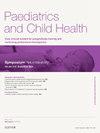Oxygen therapy in preterm infants: past, present and future
Q3 Medicine
引用次数: 0
Abstract
Oxygen is one of the most commonly used therapies in neonatology but the parameters of optimal oxygen for preterm infants have been debated for the past 50 years. The history of oxygen use in this population, as well as the results of clinical trials, have shown that liberal oxygen administration is associated with retinopathy of prematurity (ROP) and bronchopulmonary dysplasia (BPD) whereas restrictive use results in increased mortality and neurodisability. Oxygen saturation (SpO2) continuously measured by pulse oximetry is the bedside tool used to guide the fraction of inspired oxygen (FiO2) delivered to preterm infants. Although evidence favours targeting predetermined SpO2 ranges, achieving this goal consistently in clinical practice has been challenging due to intrinsic pulmonary immaturity, the need for respiratory support therapies and factors relating to the bedside caregivers’ ability to adjust FiO2. This review article focuses on the difficulties of titrating oxygen therapy in this vulnerable group and provides recommendations for best practice based on up-to-date evidence.
早产儿氧疗的过去、现在和未来
氧气是新生儿学中最常用的治疗方法之一,但在过去的50年里,早产儿的最佳氧气参数一直存在争议。该人群的吸氧史以及临床试验结果表明,自由供氧与早产儿视网膜病变(ROP)和支气管肺发育不良(BPD)有关,而限制性供氧导致死亡率和神经功能障碍增加。脉搏血氧仪连续测量血氧饱和度(SpO2)是指导早产儿吸入氧(FiO2)比例的床边工具。尽管有证据支持将SpO2定位在预定的范围内,但在临床实践中,由于固有的肺不成熟、呼吸支持治疗的需要以及与床边护理人员调节FiO2能力相关的因素,实现这一目标一直具有挑战性。这篇综述文章的重点是滴定氧治疗在这一弱势群体的困难,并提供了基于最新证据的最佳实践建议。
本文章由计算机程序翻译,如有差异,请以英文原文为准。
求助全文
约1分钟内获得全文
求助全文
来源期刊

Paediatrics and Child Health (United Kingdom)
Medicine-Pediatrics, Perinatology and Child Health
CiteScore
1.20
自引率
0.00%
发文量
70
 求助内容:
求助内容: 应助结果提醒方式:
应助结果提醒方式:


